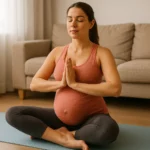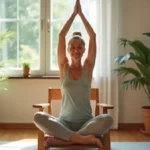
What is Bikram Yoga? Simple guide for beginners
Unlock the secrets of Bikram Yoga’s heated 26-pose sequence and discover why this intense practice transforms body and mind unlike any other.


Yoga is more than just a workout—it’s a practice that brings body, breath, and mind together in a powerful way. With a history that stretches back thousands of years, it continues to shape how people approach health and balance today.

From gentle flows to energizing sequences, yoga offers something for every lifestyle. But what makes it so effective, and why has it remained relevant for so long?
The answer lies in its core principles and the unique styles that keep evolving. Let’s uncover how yoga can transform not just your routine, but the way you feel every day.
The origins of yoga trace back over 5,000 years to ancient India, where it developed as a spiritual and philosophical practice.
Rooted in early texts like the Vedas, yoga provided a structured path for mental and physical well-being.
This early foundation emphasized harmony and balance, offering a safe, mindful approach to self-exploration and health.
Several fundamental principles guide the practice of yoga, shaping its physical, mental, and spiritual dimensions. These include mindfulness, breath control, and gradual progression to prevent injury.
Emphasis on alignment and balance guarantees safety during poses. Respect for one’s limits and consistency fosters steady improvement, supporting well-being and reducing risk, making yoga accessible and secure for practitioners at all levels.
Varieties of yoga cater to diverse preferences and goals, ranging from vigorous physical workouts to meditative practices focused on inner peace.
Popular styles include Hatha, emphasizing gentle postures; Vinyasa, coordinating breath with movement; and Yin, promoting deep stretching and relaxation.
Each style encourages practicing within personal limits, prioritizing safety to prevent injury and support mindful progress in one’s yoga journey.
Improvement in physical health stands as a fundamental advantage of regular yoga practice.
It enhances flexibility, strength, and balance while promoting joint health and posture. Yoga supports safe, low-impact exercise suitable for various fitness levels, reducing injury risk.
Consistent practice may also improve respiratory function and circulation, contributing to overall physical well-being without overstressing the body.
Beyond its impact on the body, yoga offers significant benefits for mental and emotional well-being.
Regular practice supports stress reduction, promotes relaxation, and enhances mood stability. It encourages mindful awareness, helping individuals better manage emotions in a safe, controlled manner.
These effects contribute to improved mental clarity and resilience, fostering a balanced and calm state of mind.
Although often overlooked, breath serves as a fundamental element in yoga practice, linking the body and mind through controlled inhalation and exhalation.
Proper breath control supports physical stability and mental focus while minimizing strain. Practitioners are encouraged to maintain awareness of their breathing patterns to guarantee safe, steady practice, promoting relaxation and enhancing overall well-being throughout yoga sessions.
Since both yoga and meditation emphasize mindfulness and controlled breathing, their practices are deeply interconnected.
Yoga’s physical postures prepare the body for meditation by promoting relaxation and focus.
Meditation complements yoga by fostering mental clarity and emotional balance.
Together, they create a safe, holistic approach to well-being, supporting stress reduction and enhancing overall mental and physical health.
The connection between yoga and meditation highlights the importance of a balanced approach to both body and mind.
Beginners should start with gentle poses, focusing on breath control and mindfulness. Using a qualified instructor or reliable resources guarantees proper technique and reduces injury risk.
Consistent, slow practice allows the body to adapt safely, fostering gradual improvement in strength and flexibility.
Many individuals hold inaccurate beliefs about yoga that can hinder their willingness to try or fully understand the practice.
Common misconceptions include thinking yoga is only for flexible or young people, or that it requires intense physical exertion.
In reality, yoga is adaptable to all ages and abilities, emphasizing safety, gradual progress, and mindful movement to promote well-being.
Yoga, with its ancient origins and diverse styles, offers a holistic approach to well-being by integrating physical movement, breath control, and meditation. Its core principles promote balance, flexibility, and mental clarity, benefiting practitioners of all levels. Beyond physical fitness, yoga supports emotional resilience and relaxation. Understanding its foundations and dispelling common misconceptions can help individuals begin their own practice, embracing yoga as a valuable tool for overall health and harmony in daily life.

Unlock the secrets of Bikram Yoga’s heated 26-pose sequence and discover why this intense practice transforms body and mind unlike any other.

Noticing the benefits of yoga is easy, but knowing how to start and maintain a practice takes more than just poses. Discover the essentials now.

Pregnancy brings unique challenges—can hot yoga's heat be safely managed, or does it pose hidden risks expecting mothers should know? Find out more.

Soft, soothing stretches and mindful breathing define chair yoga, but its surprising benefits extend far beyond simple seated poses. Discover more inside.

Unlock the surprising benefits yoga offers your body, from enhanced flexibility to stress relief—discover how it transforms more than just your muscles.

Achieving muscle growth through yoga might surprise you; discover how poses can sculpt strength beyond mere flexibility and relaxation.